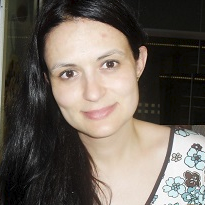Development and Application of Novel Membranes
A special issue of Materials (ISSN 1996-1944). This special issue belongs to the section "Thin Films and Interfaces".
Deadline for manuscript submissions: closed (10 June 2023) | Viewed by 10931
Special Issue Editors
Interests: water and wastewater treatment; membrane processes; fouling; modified membranes; recycle and reuse membrane; new materials
Special Issues, Collections and Topics in MDPI journals
Interests: water and wastewater treatment; membrane processes; fouling; modified membranes; recycle and reuse membrane; new materials
Special Issues, Collections and Topics in MDPI journals
Interests: water and wastewater treatment; membrane processes; fouling; modified membranes; recycle and reuse membrane; new materials
Special Issues, Collections and Topics in MDPI journals
Special Issue Information
Dear Colleagues,
Research and utilization of membranes is not a novel topic, because the use of membranes is widely extended in many industrial processes, such as the food industry, pollutant removal, seawater desalination, wastewater treatment, medicine, paint industry, and conservation of the environment, among others. However, the development and application of membranes is still a field of interest full of new opportunities, as it presents certain advantages, such as it friendliness to the environment, energy saving capacity, and high efficiency.
In the aforementioned processes, different types of membranes have been used, including microfiltration (MF), ultrafiltration (UF), nanofiltration (NF), reverse osmosis (RO), electrodialysis (ED), and pervaporation, among others. The most common membranes in wastewater treatment are made of polysulphone (PSF) and poly(ether)sulfone (PES). However, due to their hydrophobicity, tjey are highly susceptible to fouling. Different physical and chemical membrane modification processes have been tried out, including modification of membrane materials before membrane formation up to graph polymerization, plasma treatment, physical preadsorption, and others.
This Special Issue aims to cover recent developments and advances in all aspects of novel membranes and their applications, including membrane processes, combined processes (including one membrane step), modified membranes, new materials, the possibility of recycling and reusing membranes, and new technologies to reduce fouling and improve the efficiency of enhanced processes.
Both original research and review papers are welcome.
Prof. Dr. Asuncion Maria Hidalgo
Dr. Maria Dolores Murcia
Dr. María Gómez
Guest Editors
Manuscript Submission Information
Manuscripts should be submitted online at www.mdpi.com by registering and logging in to this website. Once you are registered, click here to go to the submission form. Manuscripts can be submitted until the deadline. All submissions that pass pre-check are peer-reviewed. Accepted papers will be published continuously in the journal (as soon as accepted) and will be listed together on the special issue website. Research articles, review articles as well as short communications are invited. For planned papers, a title and short abstract (about 100 words) can be sent to the Editorial Office for announcement on this website.
Submitted manuscripts should not have been published previously, nor be under consideration for publication elsewhere (except conference proceedings papers). All manuscripts are thoroughly refereed through a single-blind peer-review process. A guide for authors and other relevant information for submission of manuscripts is available on the Instructions for Authors page. Materials is an international peer-reviewed open access semimonthly journal published by MDPI.
Please visit the Instructions for Authors page before submitting a manuscript. The Article Processing Charge (APC) for publication in this open access journal is 2600 CHF (Swiss Francs). Submitted papers should be well formatted and use good English. Authors may use MDPI's English editing service prior to publication or during author revisions.
Keywords
- modified membranes
- physical membrane modification process
- chemical membrane modification process








